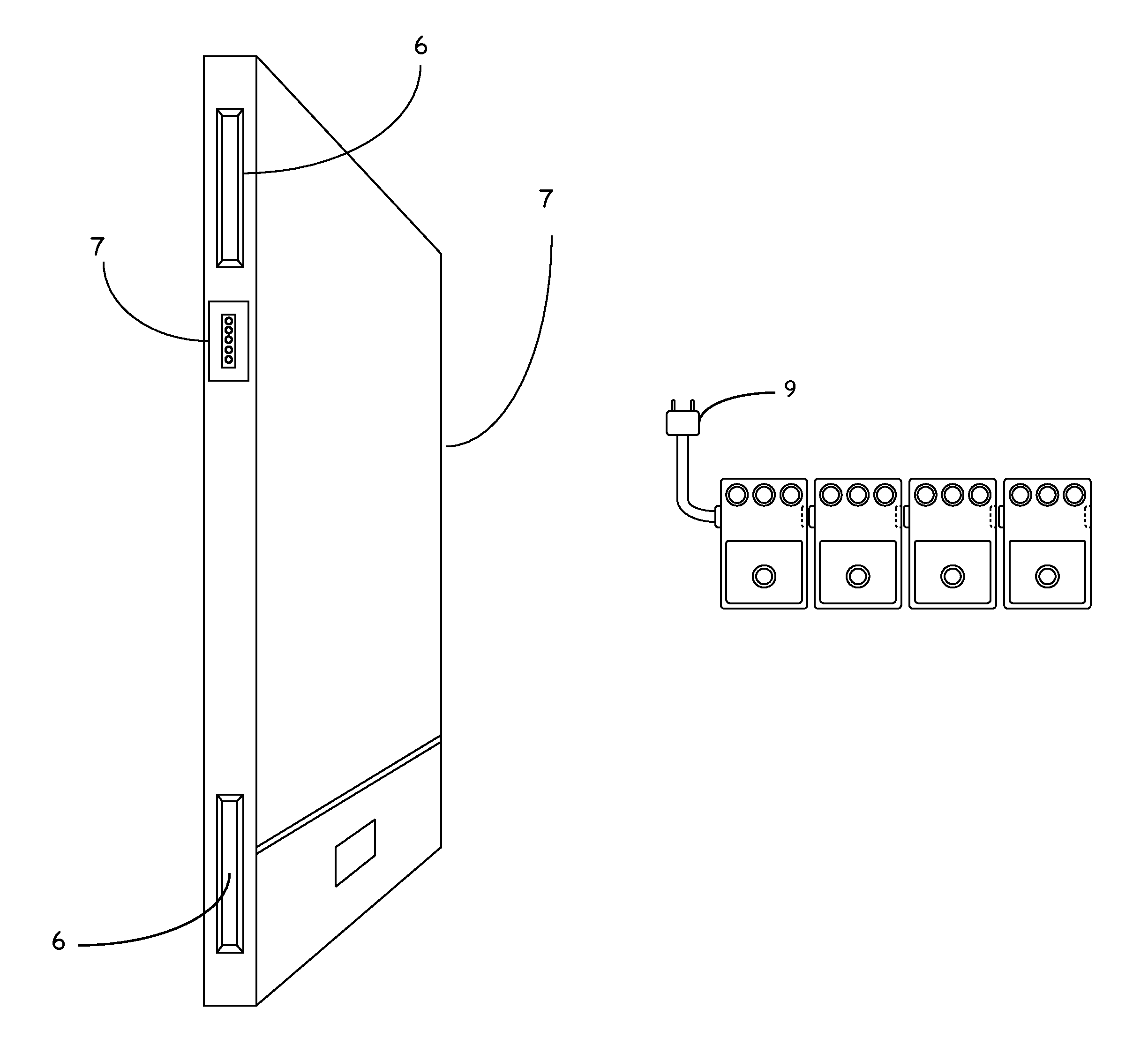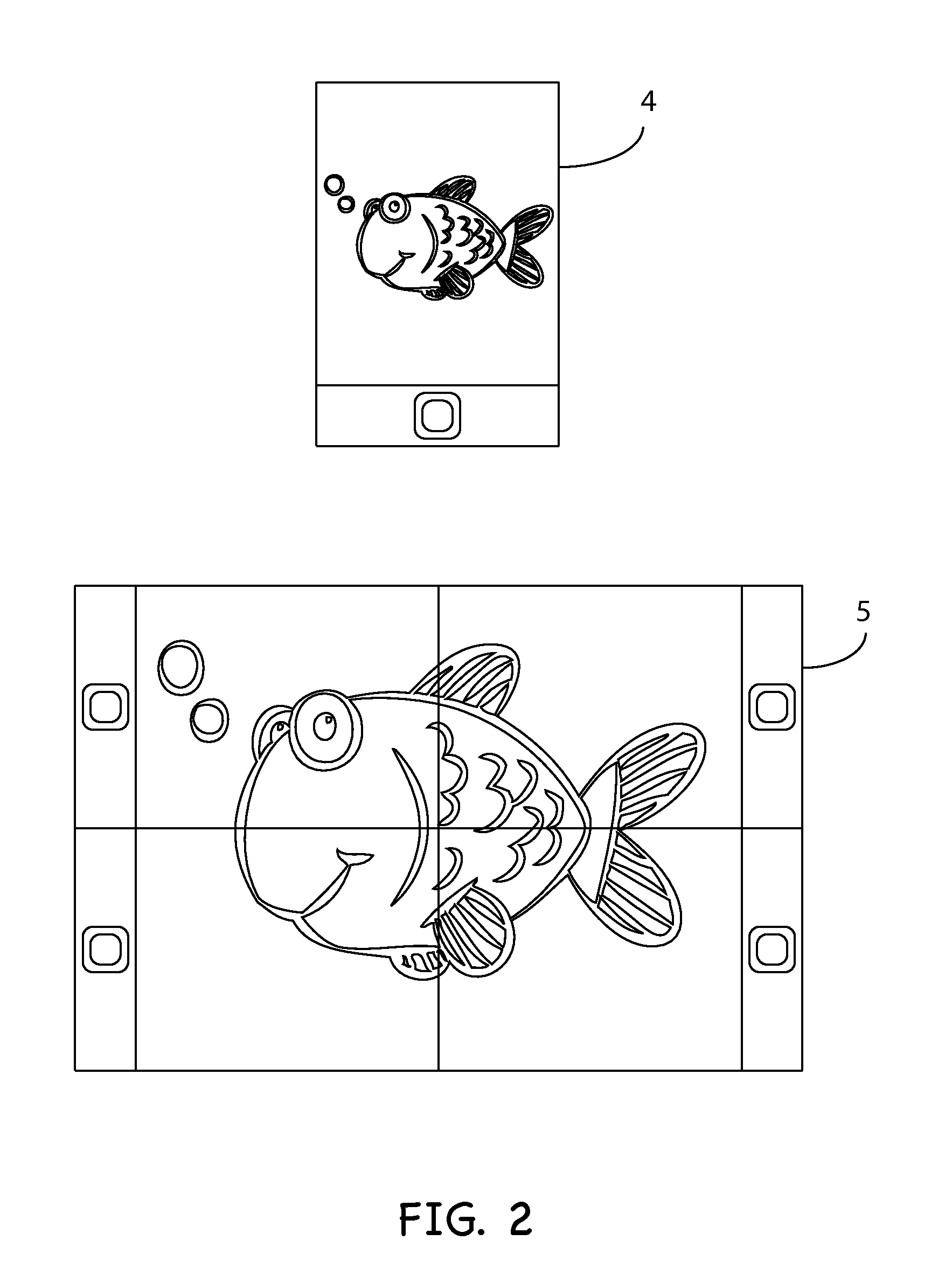Modular computer units
a computer and module technology, applied in the field of modules of computer components and systems, can solve the problems of large edges of current computer screens, limited popularity of these systems and methods, and create gaps in pictures
- Summary
- Abstract
- Description
- Claims
- Application Information
AI Technical Summary
Benefits of technology
Problems solved by technology
Method used
Image
Examples
Embodiment Construction
[0058]In the preferred embodiment the present invention seeks to provide a computer unit that can be magnetically attached to another computer unit. This method of attachment is very useful as it creates the opportunity for two or more units to work as one. The units may be networked wirelessly or through a cable, but the preferred means of attachment is via magnetic connectors that are integrated into the units for both receiving and sending power and data. Integrating these connectors into the unit rather than using cables to connect one device to another creates a set of devices that can be easily assembled together and perceived as a larger device, which can be perceived as a practical replacement for desktop computing systems.
[0059]To provide an example, imagine a family of four that each has his or her own portable tablet devices with a screen 10×10 inches in size. Throughout the day they each take their device to work or school, however when they get home they connect their u...
PUM
 Login to View More
Login to View More Abstract
Description
Claims
Application Information
 Login to View More
Login to View More - R&D
- Intellectual Property
- Life Sciences
- Materials
- Tech Scout
- Unparalleled Data Quality
- Higher Quality Content
- 60% Fewer Hallucinations
Browse by: Latest US Patents, China's latest patents, Technical Efficacy Thesaurus, Application Domain, Technology Topic, Popular Technical Reports.
© 2025 PatSnap. All rights reserved.Legal|Privacy policy|Modern Slavery Act Transparency Statement|Sitemap|About US| Contact US: help@patsnap.com



